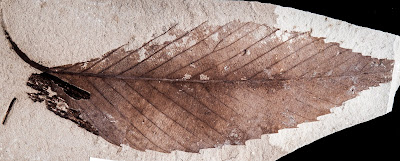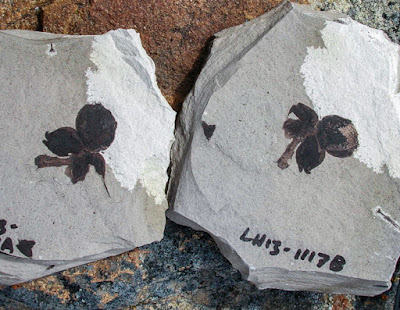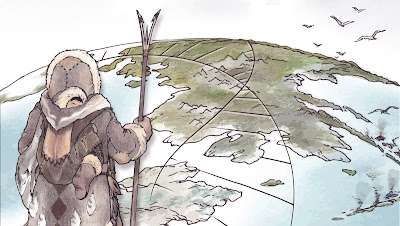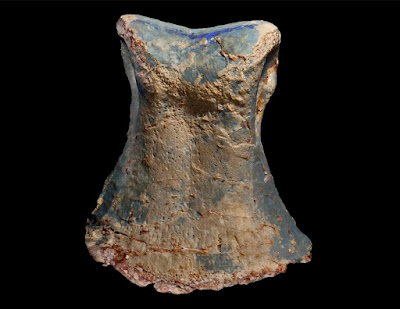One of the world's most important plant families has a history extending much farther south than any live or fossil specimen previously recorded, as shown by chinquapin fruit and leaf fossils unearthed in Patagonia, Argentina, according to researchers.
"The oak and beech family is recognized everywhere as one of the most important plant groups and has always been considered northern," said Peter Wilf, professor of geosciences and associate in the Earth and Environmental Systems Institute, Penn State. "We're adding a huge spatial dimension to the history of the Fagaceae family, and that's exciting." The plant family also includes chestnuts and the closely related chinquapins.
Common in the Northern Hemisphere and Asian tropics, Fagaceae cross the equator only in Southeast Asia, and even there just barely. The latest study, published in Science, extends the family's biogeographical history and suggests a Gondwanan supercontinent legacy in Asian rainforests larger than previously thought.
The researchers first found fossils resembling some oak leaves, with straight secondary veins and one tooth per secondary vein, at Laguna del Hunco, Chubut province. The leaves comprise about 10 percent of the thousands of 52-million-year-old leaf fossils, representing almost 200 species, found at the site over two decades in a long-term project between Penn State, Cornell University and Museo Paleontológico Egidio Feruglio (MEF), Trelew, Argentina.
 |
| Detail of the mature Castanopsis fruiting spike fossil with four nuts, dark and turned to coal, enclosed in scaly cupules. Cupule at top is splitting open [Credit: Peter Wilf, Penn State University] |
Later, the team unearthed rare fruit fossils -- two fruit clusters, one with more than 110 immature fruits -- at the site and compared them to living relatives. They found that these were fossils of ancient Castanopsis, an Asian chinquapin that today dominates the biodiverse, lower elevation mountain rainforests of Southeast Asia.
"One of the first clues was a little lip where the fruit is splitting open," Wilf said. "I recognized this lip as being similar to the fruit of the Japanese chinquapin. Then I realized there's a nut inside."
The nuts are fully encased in a scaly outer covering, or cupule, that splits open when the fruits mature. The cupules are arranged on a spike-like fruiting axis, and the young nuts retain delicate parts from their flowering stage. Their features are just like the living Castanopsis, Wilf said, and the fruits confirm that the leaves are Fagaceae.
"This is the first confirmed evidence that Fagaceae, considered restricted to the Northern Hemisphere, was in the Southern Hemisphere," said Maria Gandolfo, associate professor, Cornell University. "This is remarkable and allows us to rethink the origins of the fossil flora."
The fossils date to the early Eocene 52.2 million years ago. They are the only fossilized or living Fagaceae ever found south of the Malay Archipelago, the island chain just north of Australia.
 |
| Large fossil Fagaceae leaf from Laguna del Hunco with well-preserved details [Credit: Peter Wilf, Penn State University] |
"Before the current semi-desert conditions, trees covered Patagonia," said Rubén Cúneo, director of MEF. "Changes in climatic conditions turned it into a shrubland, and the trees were displaced."
The chinquapins may have also ranged into then-adjacent Antarctica and on to Australia, said Wilf. Castanopsis may have survived in Australia until the continent collided with Southeast Asia, where today chinquapins are keystone species, providing forest structure and food and habitat for birds, insects and mammals.
"We're finding, in the same rocks as Castanopsis, fossils of many other plants that live with it today in New Guinea and elsewhere, including ferns, conifers and flowering plants," said Wilf. "You can trace some of the associations with Castanopsis seen in Eocene Argentina to southern China and beyond."
Today, Castanopsis plays an important role in intercepting year-round mountain precipitation that delivers clean water for drinking, fishing and agriculture to more than half a billion people and sustains diverse freshwater and coastal ecosystems. However, humans are clearing these rainforests for timber, development and crop cultivation, and modern climate change is increasing droughts and fire frequency.
"These plants are adaptable if given time and space," Wilf said, adding Castanopsis' trek from Patagonia to Southeast Asia occurred over millions of years and thousands of miles. "But the pace of change today is hundreds of times faster than in geologic time. The animals that depend on these plants are adaptable only to the extent that the plants are, and we are one of the animals that depend on this system. If we lose mountain rainforests, really fast we lose reliable water flows for agriculture, clean coral reefs offshore, biodiversity and much more."
"Those kinds of climate changes can have massive effects on biodiversity," Nixon said. "The relevance of understanding this is we can start to look at extinction processes. The better we can understand what causes extinction, the better we can deal with it."
Chinquapin fossils found in Patagonia, Argentina are 52.2 million years old and represent
the earliest fruit of this family of trees and were found south of the tropics
[Credit: Strategic Communications, Penn State University]
Author: Francisco Tutella | Source: Pennsylvania State University [June 06, 2019]
Read more at https://archaeologynewsnetwork.blogspot.com/2019/06/argentine-fossils-take-oak-and-beech.html#19ZfuRxwYomX4P6f.99











